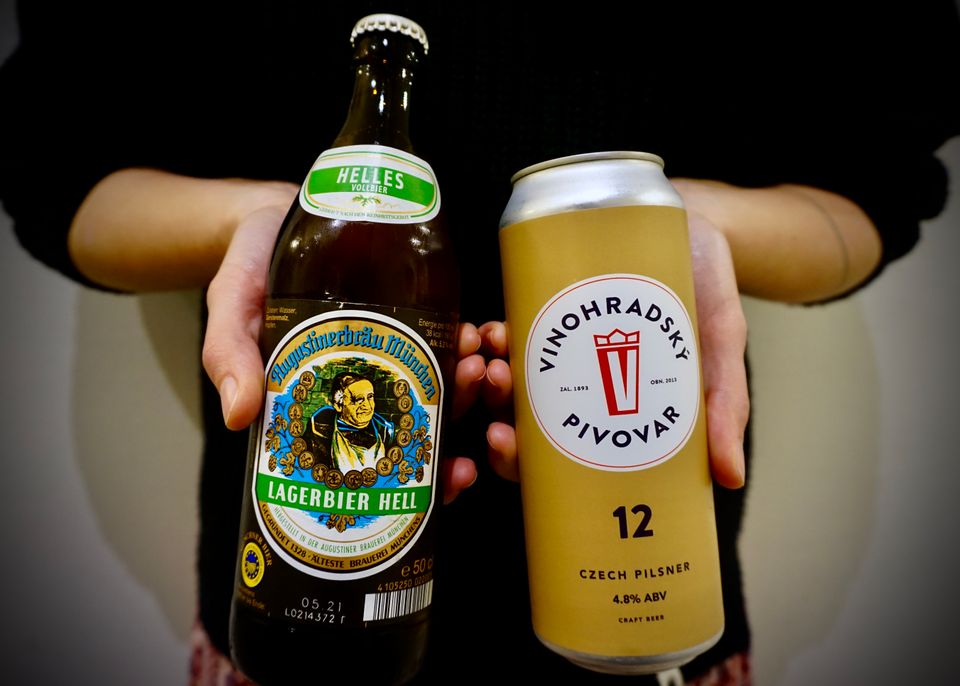Four Ways From Sunday

Lagers aren't a massively popular staple in the modern craft beer scene. Probably because the whole idea of micro-brewing isn't exactly supportive of lagering. To lager a beer you need space and time. Two things that many smaller production sites don't have an excess of. Even then it can be a risky proposition. You wait two, three, even six weeks for the brewery's first lager to lager, only to find out it's got a fault. You decide to serve it at the end-of-year staff party next week, but the only person who drinks it is the new marketing intern, who is clearly just trying to fit in. When stumbling from the keg with their seventh pint, they trip and spill the off lager all over your favourite shirt, which is now ruined. Knowing the only person to blame is yourself, you take off your shirt and head home to pen your resignation. All because you wanted to lager something.
That said, there's a time and a place for certain lagers. A quality, properly poured Czech Pilsner fresh from the tank has got to be one of the best beverages on the market, period. It's an all-seasons beer that excels in most settings. The German Pils - with its more herby hop bitterness - never filled the same void for me. The slightly maltier profile of the Czech style, dominated by the native Saaz hop aroma comes through as more refreshing, more satifying.
Go off the far end of the malt-in-lager spectrum and you'll hit the Helles, which I'm generally not a huge fan of either (guess I'm the Goldilocks of lagers). Still Pilsner malt, but with the malt made to take centre stage instead of the supporting role it plays in the German Pilsner. Much rounder than a German Pils, slightly rounder than a Czech Pils. I've got a soft spot for Augustiner's Helles, mostly because it's what everyone I knew brought to the park in Berlin, but also because the Augustiner Beer Garden in Munich is one of the most epic places to sit and relax in the summer months.
Today I've got a larger-than-normal selection to taste so I've recruited my very lovely partner for some much needed support. On the menu is a Czech Pils from the trendy Vinohradský Pivovar, a German Pils from Flensburger Brauerei, a not-so-Munich Helles from Brauerei Schroll and the aforementioned Munich Helles from Augustiner.
Augustiner Bräu | Lagerbier Hell
Munich Helles | Alc 5.2% | Best before 5.2021
Colour
Pale gold
Nose
Slightly sweet, quite earthy. Freshly rubbed grains. Mostly mild and very clean.
Mouth
Round. Starts very light, but the middle hits strong with some biscuit. Sweetness for sure, but not attributable to a fruit or vegetable. Dry finish.
7/10
Vinohradský Pivovar | Vinohradská 12
Czech Pilsner | Alc 4.8% | Canned on 13.1.2021
Colour
Just darker than pale gold with a touch of haze
Nose
A very slight bubblegum here, which doesn't show up in the mouth. Otherwise, just lots of fresh malt and some earthy hop.
Mouth
Biscuits come to mind. Some roundness at the start, but finishes light, dry, sharp and bitter. You're left with a lingering malt.
8/10

Flensburger Pilsener
German Pilsner | Alc 4.8% | Produced 24.11.2020
Colour
Pale Gold with a hearty head.
Nose
Crushed malteser core (i.e. without the chocolate) on the nose. And the communal bowl of hop pellets that every brewery leaves sitting around for visitors to smell.
Mouth
Light in mouthfeel, stays close to the tongue. Grassy, but not lawnmower fresh. Sharp and punchy herbal bitterness. finishes like you just licked a fresh loaf of bread. Lots of malt once it warms up.
6/10
Brauerei Schroll | Nankendorfer Helles
Helles | Alc 5.2% | Best before 8.6.2021
Colour
Still pale gold, but a touch darker than the Augustiner.
Nose
Very aromatic. Maybe a bit of honey and lemon, but mostly cheap artificial banana scented car air freshner that hangs on your rear-view mirror. Some corn.
Mouth
Fuller and rounder in the mouth. Quite sweet, in the sweet-corn kind of way. Finishes almost imperceptably dry.
4/10
Today we learned that Pilsners come in cans and Helleses come in bottles.
We also learned that the Nankendorfer was unfortunately not so good - I'd say there's at least one fault there between the banana (ideal amount would've been none) and the corn (could've done with less). We wanted to like it but it kind of made us sick. The Augustiner was a step up - some aspects of what we saw in the Nankendorfer, but subdued to the point that it was really enjoyable. The Flensburger was quite good, though there are probably better German Pilsners around. Its herbal qualities did really well to contrast the fantastic Vinohradská, which had very little herb and hit all the notes that a good Czech Pilsner should.
jay
